Features and types of vertical strawberry beds
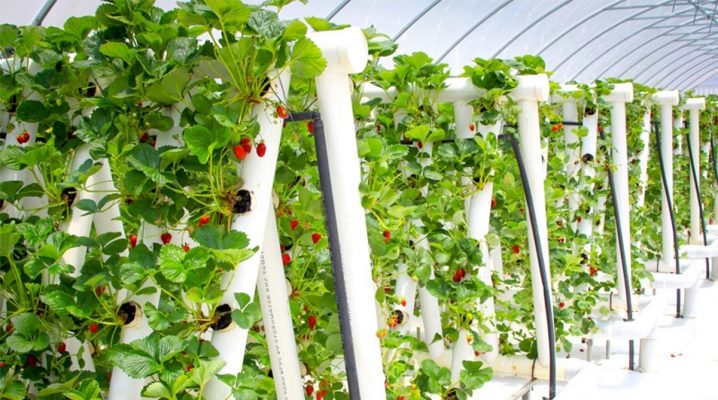
The characteristics of strawberries and strawberries make them ideal crops for growing in non-standard beds: in containers, bags, sleeves, cones, trapeziums. The most compact, economical in terms of area use, types of beds for garden strawberries are vertical.
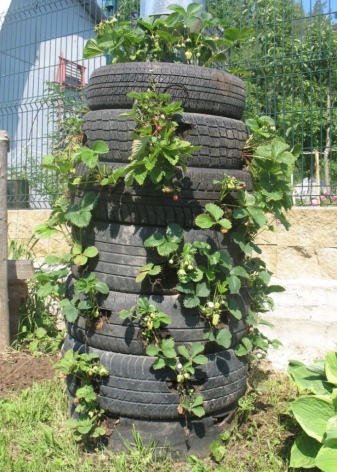
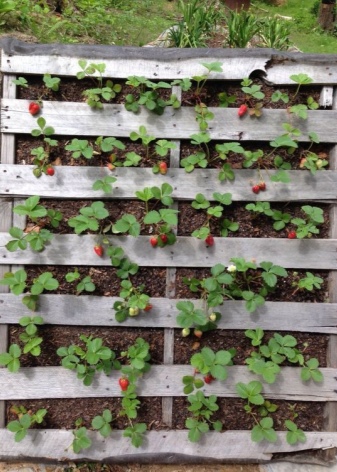
Advantages and disadvantages
Strawberries can be grown hanging for a variety of reasons: the culture does not require much space, looks neat, and some varieties are also decorative. "Pink Miracle", "Pink Dream", "Gazana", "Tuscany", "Roman", "Tristan", "Tarpan" - all these varieties have very bright and beautiful large pink flowers. But there is also a purely technical benefit.
This is why vertical strawberry beds are convenient.
-
Very practical for growing remontant varieties that bear fruit all year round. It is convenient to pick the berries, and when the weather worsens, the rack can be easily moved or covered. Repaired strawberries hibernate poorly, most often they are simply planted anew, so there are no questions about wintering the plant in an open structure.
-
Almost all structures are mobile. Unlike ordinary beds, they can be moved around, changing the conditions for the plants. Convenient for those who are verifying agricultural techniques or growing experimental varieties.
-
Small pockets are easier to fill with nutrient soil, less hassle with fertilizers.
-
There is no need for weed control.
-
It is easier to regulate watering and maintenance, because you do not need to take into account the microclimate over a large area. The balance of temperature, humidity and light is easier to check.
-
You can extend the fruiting season by moving the beds to a more convenient location.
-
Saving space on the site, creative use of space in a small cottage. A successful design will not only bring useful berries to the gardener, but also become an original decorative element.
-
Allows the use of unusable, problem areas: with infertile, too rocky, clayey, swampy, polluted soil.
-
Ease of pest control, collection and care. The tedious procedure of cutting the whiskers looks a lot easier if you don't have to bend over to each plant.
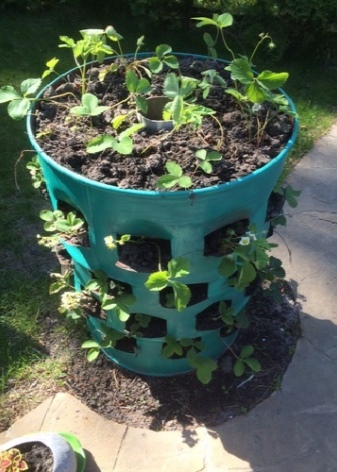

The vertical method also has disadvantages.
-
Plants will need to be watered more often. In summer, during the fruiting period, every day.
-
On hot days, the roots of plants can suffer from overheating of the soil. Sometimes even the reflective coloring of the containers does not help.
-
Not very well suited for growing ordinary strawberries, which fully bear fruit for 3-5 years and therefore need a safe winter. On the other hand, the containers can be stored in the basement for the winter, providing delicate varieties with even more successful wintering than in the open field.
The vertical method will be good for those who want to grow new, or foreign, or exotic varieties of strawberries in regions such as the Leningrad Region, Siberia, and the Far East.
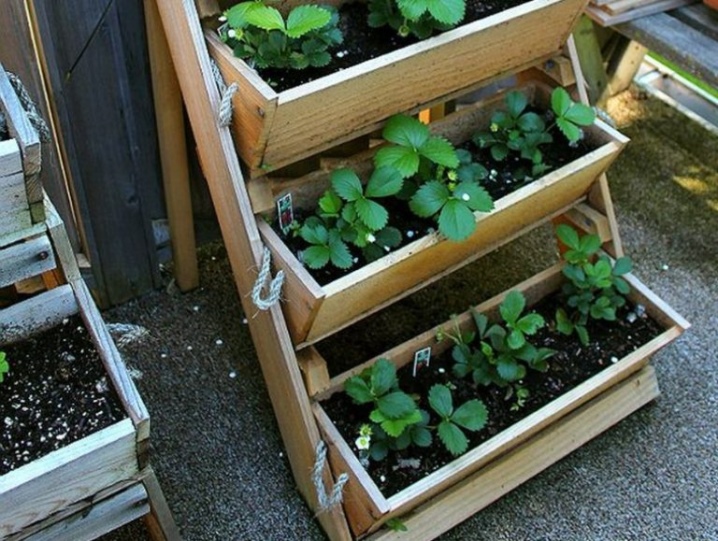
Varieties
Vertical beds on personal plots are most often made from improvised means. Sometimes these are more decorative, creative structures.
-
Beds of different sized tires stacked on top of each other.

- Embankment with sections isolated with curb tape.
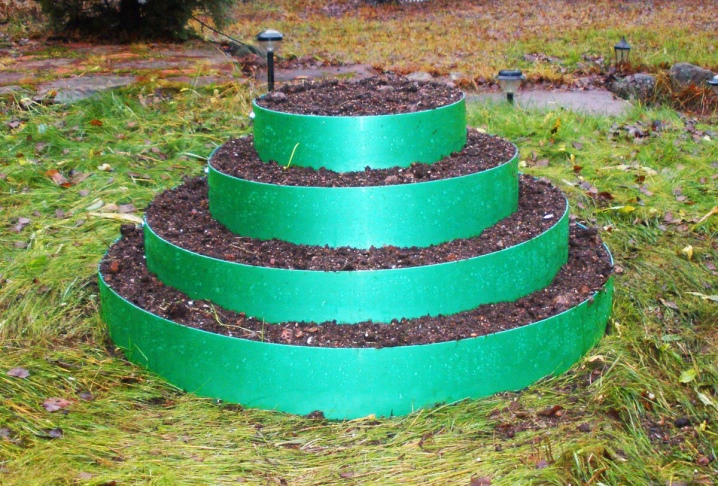
- Bottomless boxes of different sizes, stacked on top of each other, made of wood, plastic, metal.
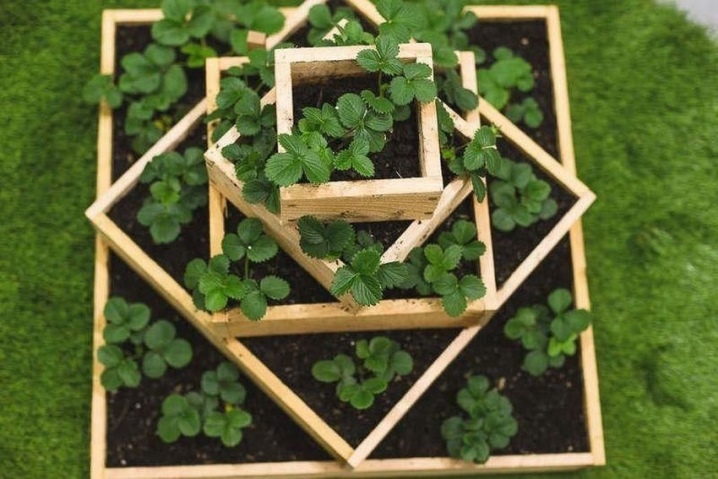
They can be made in the form of a pyramid (designed for viewing from all sides), stairs (leaning with the vertical side against any vertical surface).
-
Bed-cylinder. You will need an old plastic or metal barrel and half-diameter pipes from the barrel. You can use iron buckets, baskets. The principle is the same: in the walls of the container, cells measuring 5x5 cm are cut out in a checkerboard pattern at a distance of 25 cm from each other. The inner cylinder is often drilled with a thin drill and inserted into the barrel in the middle. The distance between the walls is filled with soil, the center is filled with gravel. Watering is carried out in the center.
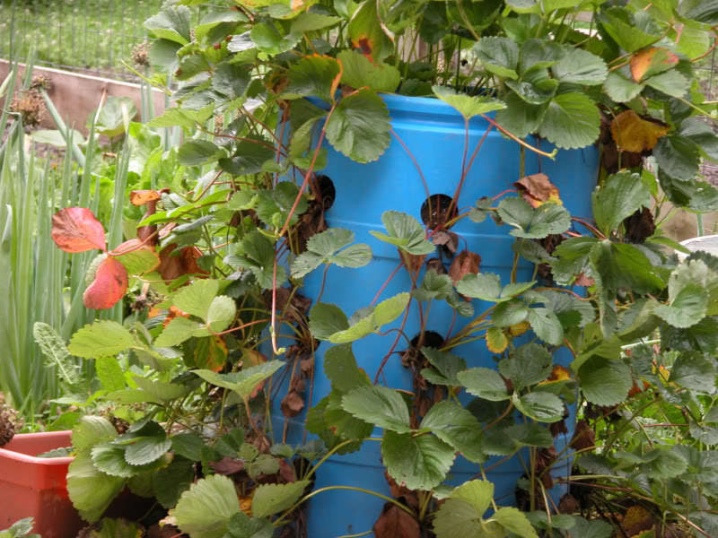
- A bed of drainpipes. The old pipe is stably buried in the ground. Round holes are pre-cut in it. The pipe is covered with nutritious soil, at the same time placing the seedlings in the "windows". The design has options: sometimes a narrower pipe is inserted into a wide diameter pipe, with frequent small holes, in order to organize simple and quick watering in this way. Water is simply poured into the center and feeds the plants planted between the pipes.
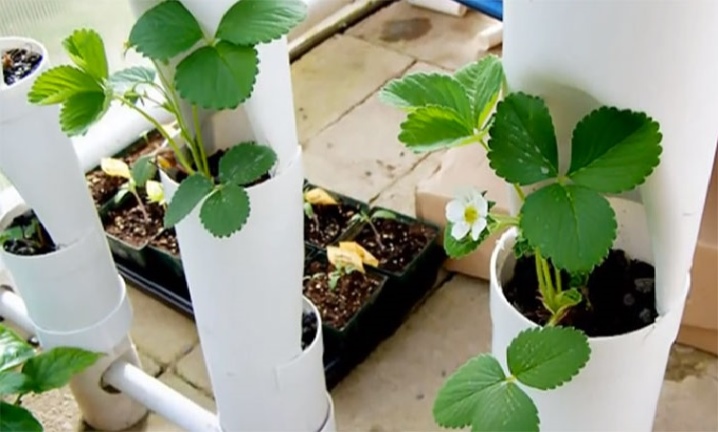
The simplest vertical bed - plants are planted in plastic bags. The bags are placed on a fence or screen made of metal mesh.
Can be made from spunbond, burlap, tarpaulin and any strong woven or nonwoven fabric, similar to a wall mat with pockets, and secured to a fence. Strawberry seedlings are planted in the pockets. The best option is made of insulation with foil spraying. Pockets made of this material hold moisture better and prevent the roots from overheating.

How to sew.
-
They purchase a piece of material 2 times larger than the area of the future garden.
-
Half is used as a base, from the second, future pockets-stripes with a height of 25-30 cm are cut. The stripes must be long so that the pockets can be made voluminous.
-
The distance from pocket to pocket is 20 cm.
-
The bottom of each pocket is laid with bow folds.
-
All seams are sewn twice with a strong thread.
-
On the back of each pocket, holes are made at the bottom to drain excess moisture.
-
Loops are made on the sides.
-
The pockets are filled with a drainage layer of 1-2 cm, the rest is filled with a nutrient mixture.
-
Plants are planted.
-
The structure is hung on the wall, pulled, putting on the hinges on the studs.
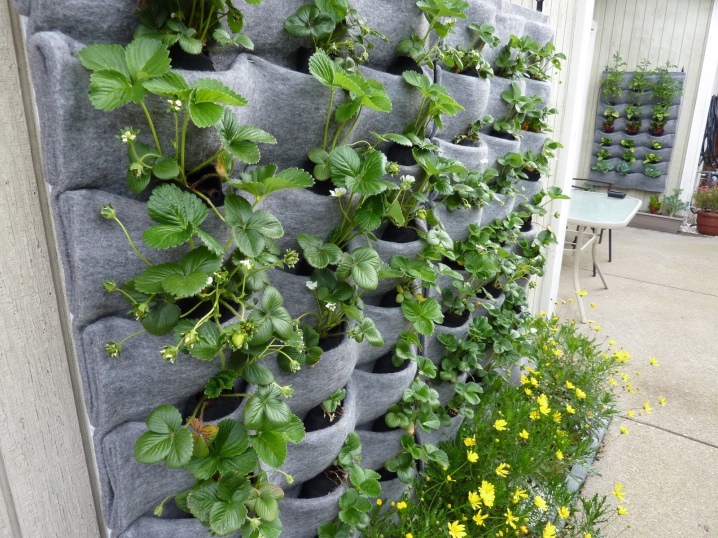
In the fall, the hanging bed is removed, cleaned, rolled up - it is convenient to store in any utility room.
Other hanging beds.
-
From the drainpipes. The pipes are cut in two lengthwise. Placed horizontally on suspensions.
-
From plastic bottles. They are cut both lengthwise and across.
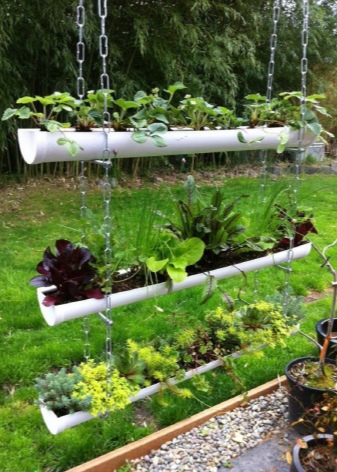
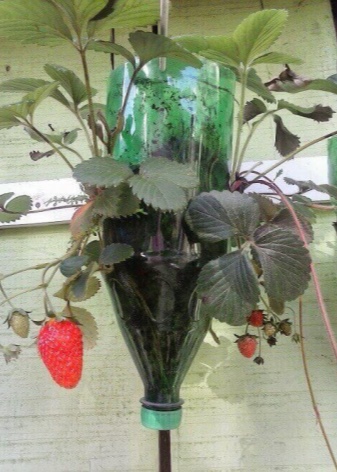
The nuances of growing
Care for strawberries in vertical structures is the same in terms of labor intensity as in ordinary beds. With verified agricultural technology or structures with automation - even less. You just need to take into account some of the nuances.
Landing
The soil for planting strawberries in small pockets should be more nutritious, more moisture-absorbing and at the same time more elastic so that it does not cake.
Optimal mix.
-
Sod land - 20%. This is density and nutrition.
-
Compost - 30%. Nutrition.
-
Peat - 25%. For an even more successful soil structure and improve its physical properties, 5% foam crumbs are added. Especially if the structure does not make it possible to equip the drainage layer.
-
Leafy land - 10%.
-
Hydrogel - 10%.
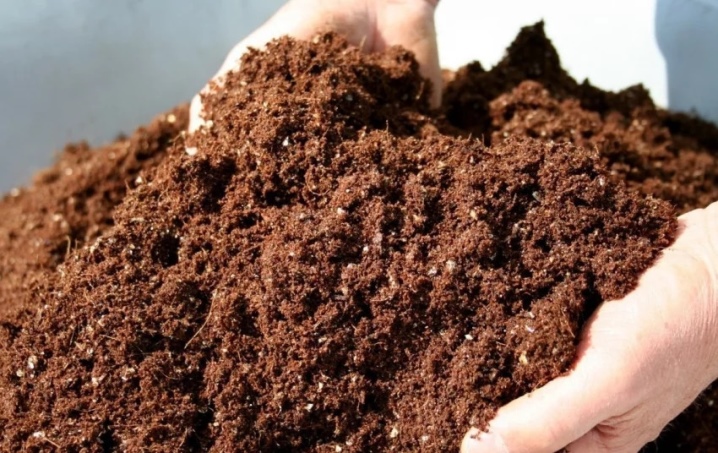
Two-year-old well-rotted horse or cow manure, chicken droppings, rotted plant residues are suitable as compost.
For your information. The length of the strawberry root system is 30 cm. This should be taken into account when calculating the structure.
Plants should not be planted in clean commercial soil, even if it is intended for strawberries. Such soil will almost always contain a lot of peat and will dry out very quickly.
You can plant any varieties of strawberries to your taste, but it is better to choose remontant ones. They give less mustache, bear fruit abundantly, the fruiting period will be extended for the whole season, which justifies the use of complex structures.
Before planting seedlings, they are immersed either in Epin's solution or in mullein solution for better survival.
1-2 year old seedlings are planted, they will give a crop in the same year.
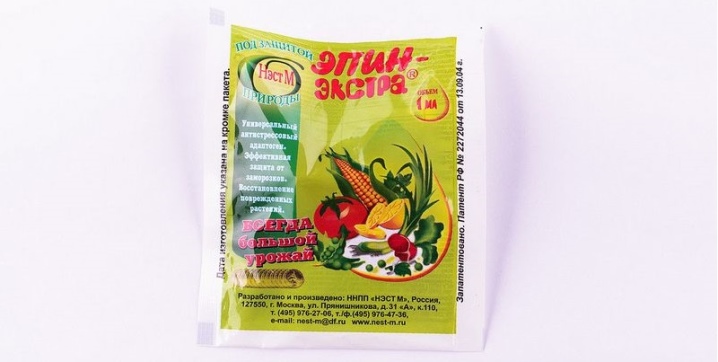
Care
Care consists in removing whiskers, damaged leaves, treating pests if necessary, watering and applying fertilizers. There are several ways to solve the problem of frequent watering.
-
Choosing the right soil. Strawberries need loose but water-intensive soil. The percentage of peat should be carefully checked. An excess of it will lead to the fact that on too hot days the plants will dry out in half a day.
-
Hydrogel. Polymer pellets are added to the soil at planting. They store water as they grow in size. Plants absorb moisture from them as needed.
-
Drip irrigation. It completely removes the need to worry about watering. It will only be necessary to periodically adjust the water supply, to fill the container, if the water intake is not from the water supply. Modern manufacturers offer a variety of installations, prices from 2 thousand rubles.
Watering needs to be very careful, even with a central intake pipe. On hot days, it is better to irrigate the bushes additionally directly. At the same time, stagnant water should be avoided - this is a gross mistake. Once a week, watering is completed with fertilizers. Either a generic mineral blend or urea is used. But the latter is used only to stimulate the growth of green mass; by the time of flowering, pure nitrogenous fertilizing should be stopped.
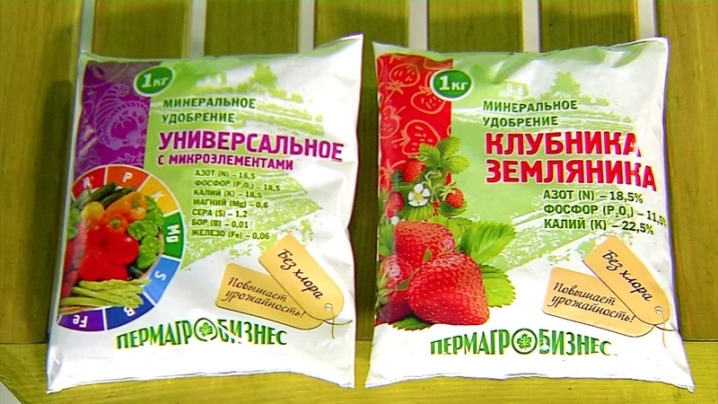
Wintering
Strawberry is a poorly hardy plant. In the middle lane, in regions with good snow cover, it can winter without shelter. If there is little snow, it will partially freeze. The main rule: the roots should not be exposed to temperatures below -8 ° C. This is the temperature at which the underground part of the plant begins to suffer. In the open field, plants die when the temperature drops to -18 ° C, if there is no snow cover.
In most regions of Russia, the strawberry root system will not survive in vertical structures. Therefore, the installations must either be transferred to cool conditions with temperatures from zero to + 5 ° C, or plan for planting new seedlings next spring.
Vertical beds are actively used in industrial production. The benefits are obvious: the plants are easier to control, the agricultural machinery is easier to adapt to a specific variety, squeezing out its full potential, lower rental costs, and a significant increase in yield per hectare of area.
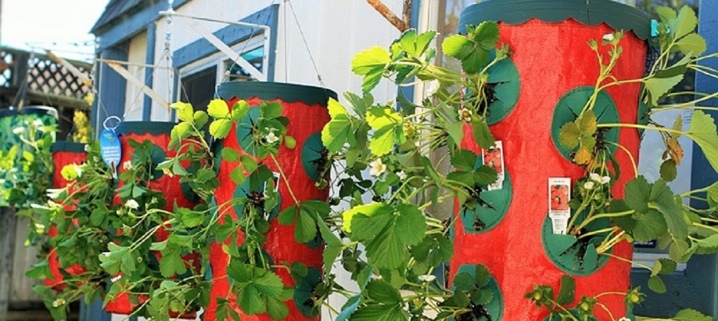













The comment was sent successfully.